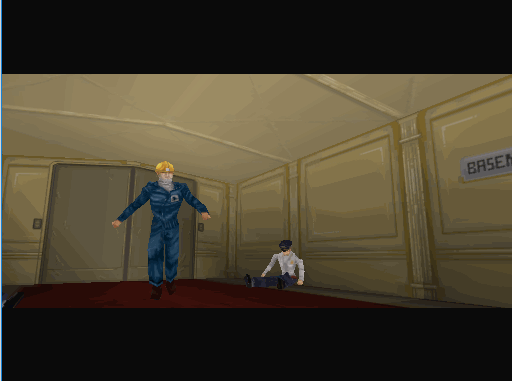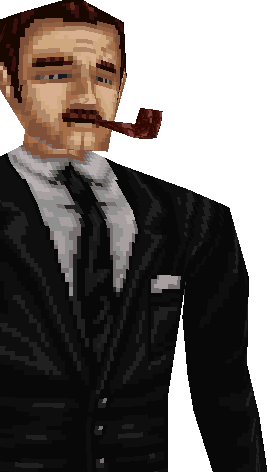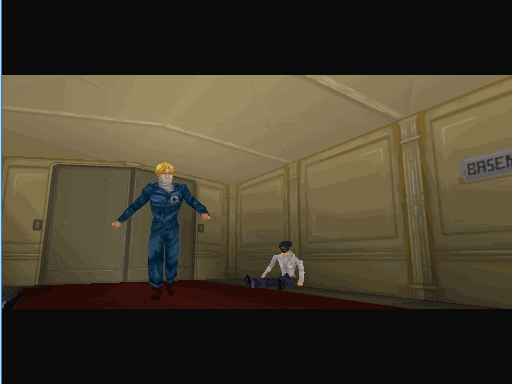
In The spy who shot me™, you play as the bumbling Agent 7, who is basically James Bond if you remove the intelligence, cunning aspects and adeptness with weaponry. Instead, you’re left with an intentionally-lackluster character whose jokes tend to fall on deaf ears. You’ll progress through a series of story missions that feel all too generic: stop S.C.U.M. (the bad guys), deactivate the nuclear bomb, rinse and repeat. It quickly becomes a repetitive journey through various locations.

The game was developed as an homage to classic ’90s-era first-person shooters on the Nintendo 64 and PlayStation 1 consoles such as the classic GoldenEye 007. If you haven’t revisited 20-year-old first-person shooters in a while, you may forget just how rough around the edges they look. The spy who shot me™ emulates this look almost perfectly, including low-poly character models and a lack of textures in the environments. The intentional lack of detail makes many environments look bland and unfinished.
At the core of The spy who shot me™ is a first-person shooter that does a poor job setting itself apart from other games in the genre. The game does offer a variety of different weapons to find and use against enemies, but the actual gunplay does not feel particularly polished. You also have access to throwing knives and grenades that can be collected at various points throughout the levels. Enemies tend to come in small
Each level has you progressing through a variety of narrow corridors, shooting enemies and searching for switches to open doors. The levels do have multiple objectives to complete, with two of them being optional, so there is at least some level of replayability if you’re looking for it. There are also 50 hidden “S.C.U.M. masks†to collect to prolong your gameplay. Because many of the walls in the levels lack textures, navigation can become confusing rather quickly. For instance, locating the correct door to proceed through often ends up being a game of trial-and-error where you meticulously run into every door until you find the correct one that

The sound design in The spy who shot me™ features cheesy, over-the-top British voice acting. Again, the quality is intentionally bad to fit with the overall aesthetic, so don’t expect top-tier performances. The frustrating part is how often they reuse a single specific ‘island-y’ sounding song, which seems present in almost every cutscene. Another repetitive sound you’re going to hear a lot
Movement is pretty straightforward in The spy who shot me™, featuring
Another mission has you controlling a speedboat that is almost impossible to drive without crashing into rocks. Besides these limited annoyances, the game handles more like a modern first-person shooter as opposed to the game it’s trying to emulate.
The Good
A good-length story featuring a variety of levels in different locations will have you feeling like a true globetrotting spy. Smooth, fluid movement featuring modern first-person shooter controls makes traversal throughout levels mostly seamless. The writing is intentionally cheesy, which may lead to a few laughs. Furthermore, the arsenal of weapons will give you plenty to play around with.
The Bad
Because of the
Overall
Indie games have traditionally emulated older games in some form or fashion, whether going for an 8-bit pixelated look or reimagining traditional gameplay. Generally, these games add in some modern gaming elements to differentiate themselves, as well. The biggest issue is that The spy who shot me™ is trying to replicate an experience from an era of games that has not aged well. The intentionally bad character dialogue and issues present in ’90s-era games make for an unpleasant experience overall. It’s hard to say how much of the game’s overall design choices are intentional, as opposed to just poor. The spy who shot me™ is a game that really does make you feel like you’re playing GoldenEye in 2019, but you have to ask yourself, do you really want to play GoldenEye in 2019?

Leave a Reply